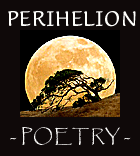Grand Canyon, North Rim
by Lois P. JonesPenShells
Third Place, December 2013
Judged by Kelly Cherry
At the edge of a known world
mountains repeat themselves
like old people. Each ripple
a blue syllable, a language of forgetting.
A place like this, exposed
to harsh winters and long years
of drought, begs to be how it was.
I can’t but think
standing at the chasm
above the seep willow
how the ghost water raged
like bison through the bottom
of this immense gorge.
Not from flash floods and snow melt,
but a force so powerful
the ground split open, shearing
the canyon raw. What strength could carry
massive boulders miles away?
Surely no methodical erosion,
but a truth catastrophic
leaving this maw, this mouth
to gawk. My tongue so heavy now
with dust, like a potter’s wheel in the sun,
stays mute – having nothing more to say
than two hawks circling the canyon
or the wind coaxing the last leaves
from the cottonwood below.
It’s nearly dusk and the red rock face
shifts mood, deepening with itself.
What time changes leaves a shadow,
a human sundial at a precipice. A gnomon
tilted toward a true celestial north.
Couplets convey a sense of the canyon, the huge expanse, its age and history of "harsh winters" and "years / of drought." I love "how the water raged / like bison through the bottom" because we see the water raging and a still life is set in motion (the bison). The speaker is so overcome that his tongue is tied by heavy dust—like a potter's wheel in the sun," dust falling onto it. The final three lines move away from description to inform us that the changes wrought by time are marked by a "shadow" or "a human sundial at a precipice," which I take to mean human perception, and surely it is true that the perceiver is forever in shadow, "true celestial north" forever the aim. --Kelly Cherry

